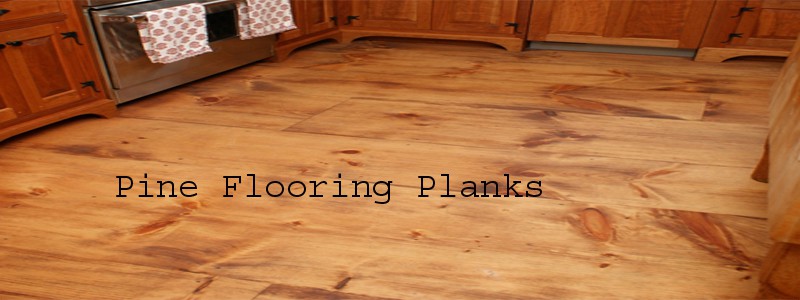| Pine flooring planks are a long-standing tradition for flooring. Though pine is a soft wood pine floors are durable, and look good too. |
When looking at wood flooring to update your older home or add to a new home, you want to consider pine flooring. While it is classified a soft wood, it offers many of the same benefits as a hard wood flooring and has some special characteristics that make it appealing for any home. Pine flooring comes in many different widths and even types that will allow you to make it a special part of your home.
Pine flooring planks comes in all different widths from wide to thin. Wider pine flooring planks offer a more traditional, country look to a home and can work to make a room look larger and wider. They also offer additional character to your home, simply because most homes do not have the wider planks. These planks can give your home or room a new look and feel that will delight you.
Pine flooring also comes in many different varieties. Heart pine flooring features beautiful veining that offers texture and interest with classic lines and very little knotting. Southern pine flooring features beautiful lines and veining and you can choose from a flat or vertical cut that will make the graining even more beautiful and impressive. Antique pine flooring is flooring that has been rescued or removed from a home or building that was being demolished and reused. This is a wonderful way to get flooring that has that aged patina without having to take the time for it to occur naturally.
Installing pine flooring planks is something you can do, but it will take a bit of time and effort. If your budget allows consider hiring a professional to ensure that the job is done right. Here are the steps for a do-it-yourselfer to install pine flooring.
- Remove baseboards from the perimeter of the room. If you are careful you can reinstall when you are finished with your project.
- Inspect the subfloor to ensure that it is level and that there is no bubbling or loose parts.
- Replace any subfloor that’s in bad shape to ensure a solid surface for your pine flooring planks.
- Plan for your pine flooring planks to run perpendicular to the floor joists. It keeps the floor from developing a wavy surface as the planks between joists sag with time.
- Determine your starting wall and begin laying out the planks, being sure that you leave 1/4-1/2″ of space between your planks and the perimeter of the room to allow for expansion and contraction.
- Hammer nails into the planks at least 1 inch from the edge of the boards. Countersink each nail at least 1/16′ into the plank to ensure it does not get caught when sanding.
- Stagger the ends of the planks to give your floors more stability and interest.
- After you get all of the pine flooring planks laid down and installed, it is time to sand and finish.
Pine flooring will give your homes a new look and feel. With the added patina and wear that occurs, you will find this adds even more beauty and style. Whether you are remodeling your older home or building a new home, be sure that you consider pine flooring planks.

We’re looking at different flooring options for our vacation home In Florida. The picture you posted looks gorgeous. I love it. Will have to check out the pricing and variety that you mentioned. Thanks for sharing it. :)